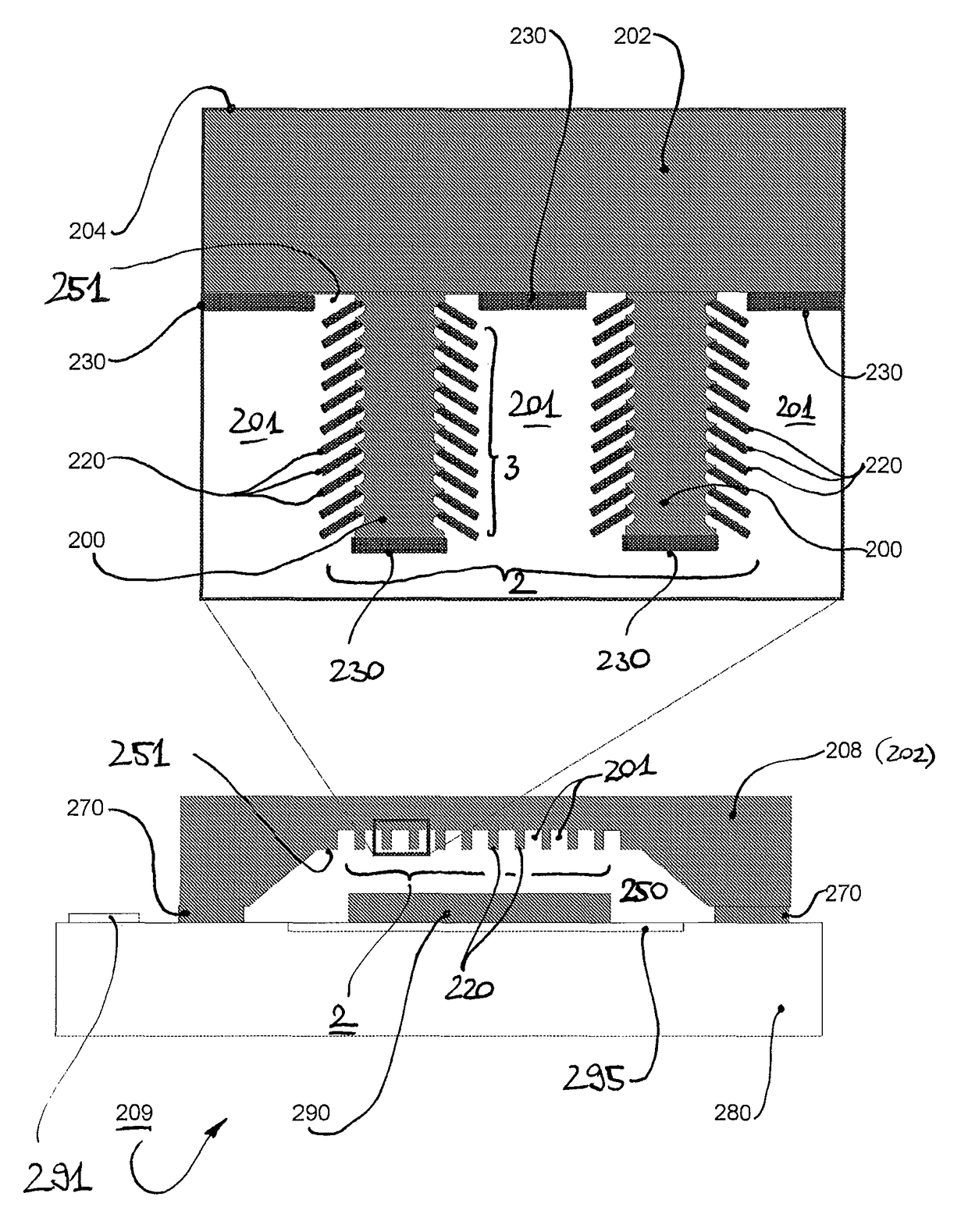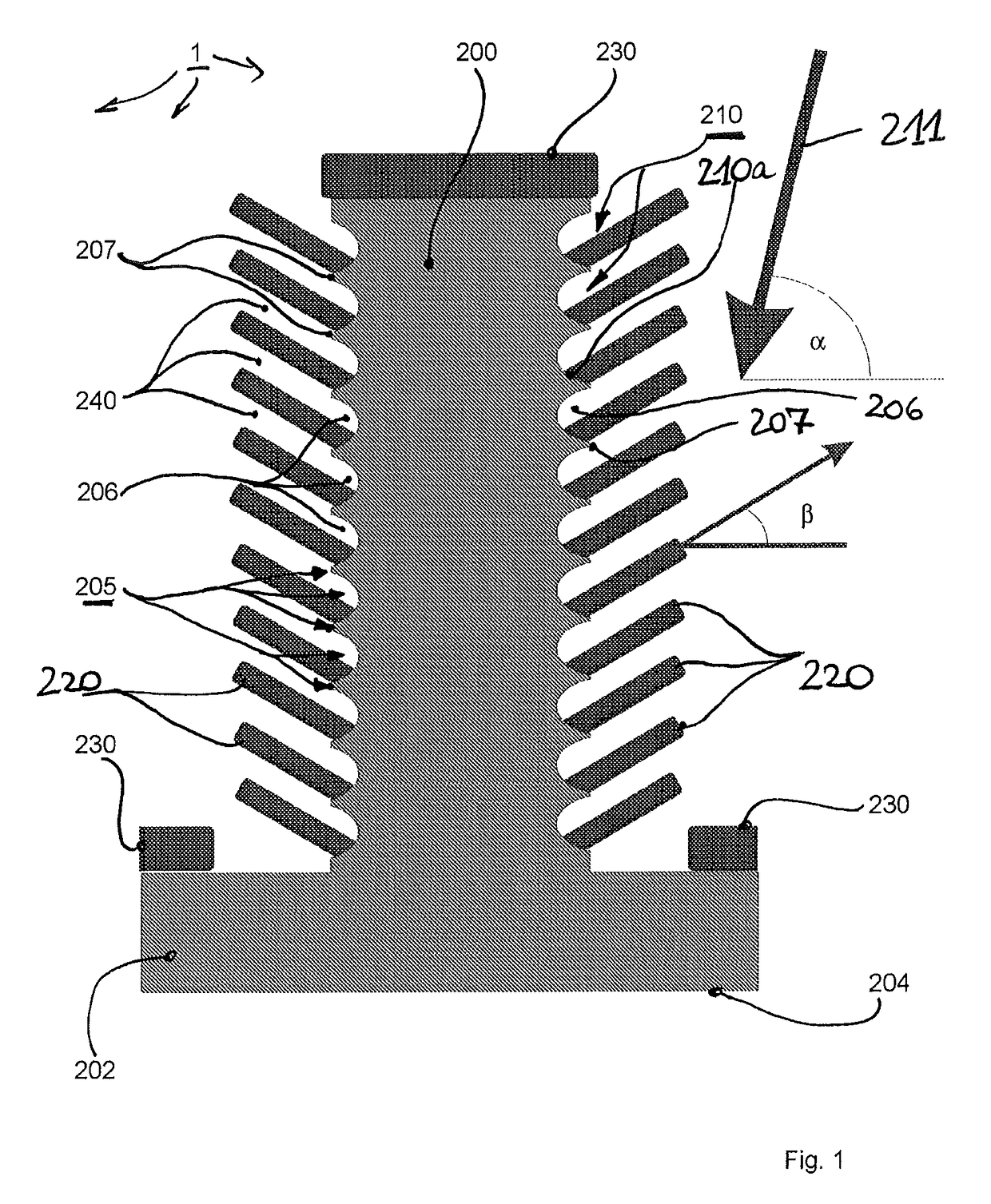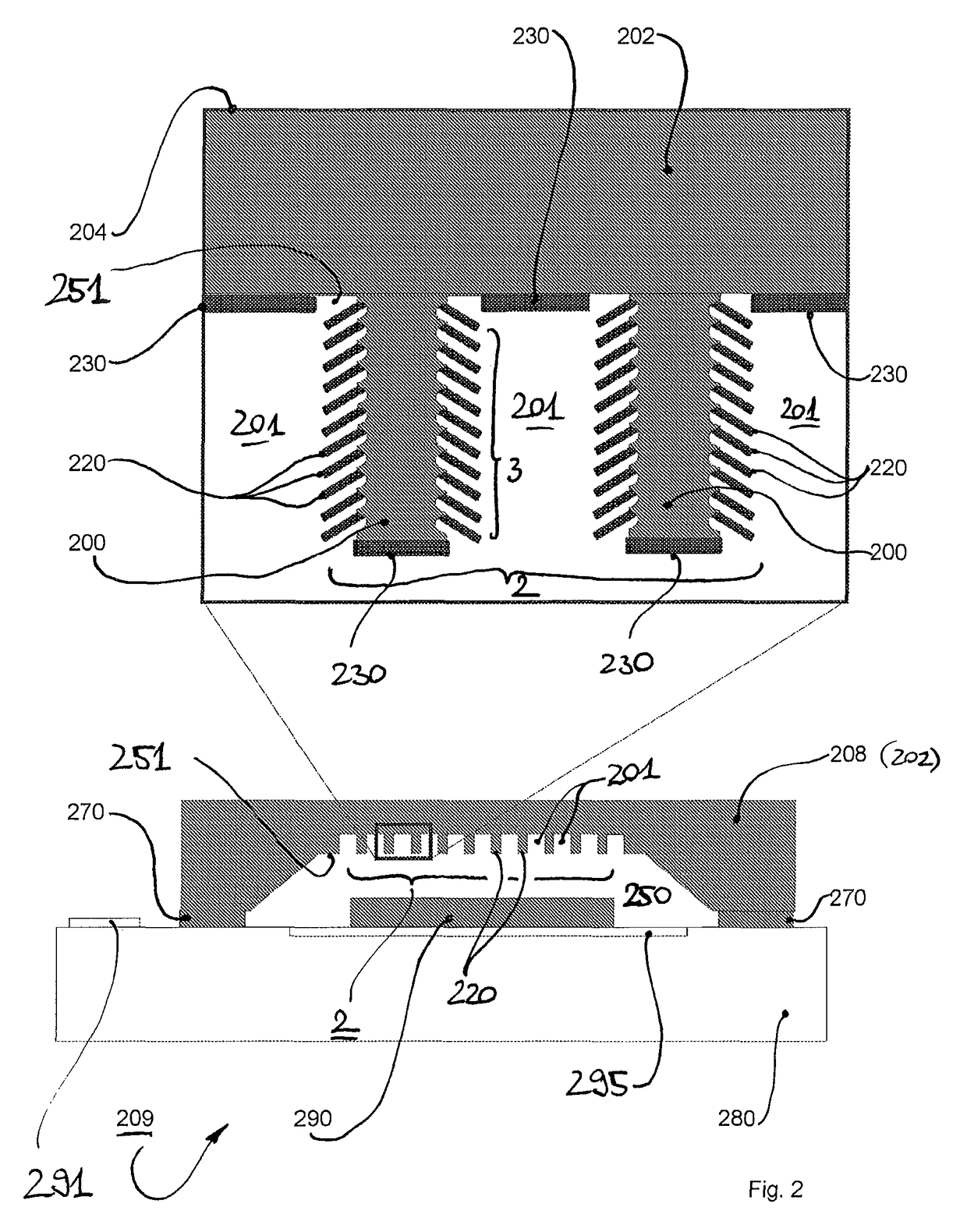Method for forming a micro-surface structure and for producing a micro-electromechanical component
a micro-surface structure and micro-electromechanical technology, applied in the field of methods, can solve the problems of gas activating other damaging mechanisms, harmful penetrating gases, and undesirable oxygen, hydrogen and water vapour in hermetic housings
- Summary
- Abstract
- Description
- Claims
- Application Information
AI Technical Summary
Benefits of technology
Problems solved by technology
Method used
Image
Examples
Embodiment Construction
[0040]In FIG. 1, a portion of a micro-surface structure 1 according to the invention is greatly enlarged and illustrated schematically. The micro-surface structure 1 is formed on a substrate 202. The greatly enlarged FIG. 1 illustrates only one solid member 200 of the micro-surface structure 1. This member protrudes perpendicularly relative to the substrate plane 204. This plane extends in the direction of the arrow illustrated in FIG. 1 and perpendicularly relative to the plane of projection. As cannot clearly be seen from FIG. 1, the solid member 200 has a substantially circular cross-section in a cross-section parallel to the substrate plane 204. The surface 205 of the solid member 200 that extends perpendicularly relative to the substrate plane 204 is provided with a wave structure 210 which consists of wave troughs at 206 and wave peaks 207.
[0041]The functional material applied to the substrate surface is in the example illustrated a getter material 220, 230 comprising, for exa...
PUM
| Property | Measurement | Unit |
|---|---|---|
| height | aaaaa | aaaaa |
| angle | aaaaa | aaaaa |
| angle | aaaaa | aaaaa |
Abstract
Description
Claims
Application Information
 Login to View More
Login to View More - R&D
- Intellectual Property
- Life Sciences
- Materials
- Tech Scout
- Unparalleled Data Quality
- Higher Quality Content
- 60% Fewer Hallucinations
Browse by: Latest US Patents, China's latest patents, Technical Efficacy Thesaurus, Application Domain, Technology Topic, Popular Technical Reports.
© 2025 PatSnap. All rights reserved.Legal|Privacy policy|Modern Slavery Act Transparency Statement|Sitemap|About US| Contact US: help@patsnap.com



